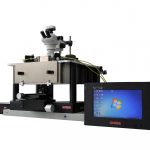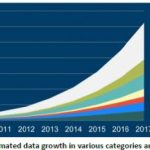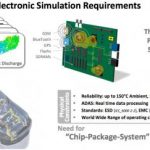We are happy to publish book reviews, like this one from Dr. Georges Gielen of the KU Leuven in Belgium, for the greater good of the semiconductor ecosystem. So, if you have a semiconductor book you would like to review for fame not fortune let me know.… Read More
 EDA Has a Value Capture Problem — An Outsider’s ViewBy Liyue Yan (lyan1@bu.edu) Fact 1: In the…Read More
EDA Has a Value Capture Problem — An Outsider’s ViewBy Liyue Yan (lyan1@bu.edu) Fact 1: In the…Read More WEBINAR: How PCIe Multistream Architecture is Enabling AI ConnectivityIn the race to power ever-larger AI models,…Read More
WEBINAR: How PCIe Multistream Architecture is Enabling AI ConnectivityIn the race to power ever-larger AI models,…Read More A Six-Minute Journey to Secure Chip Design with CaspiaHardware-level chip security has become an important topic…Read More
A Six-Minute Journey to Secure Chip Design with CaspiaHardware-level chip security has become an important topic…Read More Lessons from the DeepChip Wars: What a Decade-old Debate Teaches Us About Tech EvolutionThe competitive landscape of hardware-assisted verification (HAV) has…Read More
Lessons from the DeepChip Wars: What a Decade-old Debate Teaches Us About Tech EvolutionThe competitive landscape of hardware-assisted verification (HAV) has…Read More Think Quantum Computing is Hype? Mastercard Begs to DisagreeJust got an opportunity to write a blog…Read More
Think Quantum Computing is Hype? Mastercard Begs to DisagreeJust got an opportunity to write a blog…Read MoreARM’s (Back!) in FD-SOI. NXP’s Showing (Real!) Chips.
“Yes, we’re back,” Ron Moore, VP of ARM’s physical design group told a packed ballroom at the recent FD-SOI Symposium organized in Silicon Valley by the SOI Consortium. FD-SOI gives you a silicon platform that’s highly controllable, enables ultra-low power devices, and is really good with RF, said Ron Moore during his presentation,… Read More
Achieving Requirements Traceability from Concept through Design and Test
Excel is a wonderful, general purpose spreadsheet tool that lets me organize and analyze rows and columns of data into something meaningful, however it doesn’t know anything about requirements traceability for complex semiconductor projects. So why do so many engineering teams still rely upon Excel or custom, in-house… Read More
System-Level Power Estimation
When I first saw that Rob Knoth (Product Director at Cadence) had proposed this topic as a subject for a blog, my reaction was “well, how accurate can that be?” I’ve been around the power business for a while, so I should know better. It’s interesting that I jumped straight to that one metric for QoR; I suspect many others will do the same.… Read More
We Need Libraries – Lots of Libraries
It was inevitable that machine learning (ML) would come to EDA. In fact, it has already been here a while in Solido’s variation tools. Now it has found an even more compelling application – library characterization. Just as ML has radically transformed other computational arenas; it looks like it will be extremely disruptive here… Read More
Noise, The Need for Speed, and Machine Learning
Technology trends make the concerns with electronic noise a primary constraint that impacts many mainstream products, driving the need for “Design-for-Noise” practices. That is, scaling, and the associated reduction in the device operating voltage and current, in effect magnifies the relative importance of non-scalable… Read More
Dear Cadence: Calibre Didn’t Run Any Dracula Decks
After reading the Cadence blog post –“Dracula, Vampire, Assura, PVS: A Brief History” – Dr. Andrew Moore has written the below article where he helps readers get a sense as to what “the year of hell” was like, from one of the key individuals who lived it. Andrew also addresses and corrects some of the “urban legends”… Read More
Data Center Explosion Push for Fast Adoption of 25G
The data center rack server market is estimated to growat a high Compound Annual Growth Rate (CAGR) of 20% to reach $90 billion by 2021. Such growth is due to the significantly rise in the number of connected devices, the growth in the volume of data per device and theneed for quick processing of high-volume data. Much of these data … Read More
Simulating ADAS
Simulation is a broad technique spanning certainly digital logic and circuit simulation but also methods beyond these which are particularly relevant to ADAS design. In fact, much of the design of full ADAS systems begins and ends with these types of modeling. This is in part due to the need fully validate integrity and reliability… Read More
It’s Time to Stop Thinking in Two Dimensions
The first transistor was made of two electrodes, held in place by plastic, making contact with a piece of doped germanium. Ever since then, devices and their packaging have been performing a complicated and oftentimes intricate dance. Single transistor devices became integrated circuits, and along the way separate IC’s were… Read More









AI RTL Generation versus AI RTL Verification